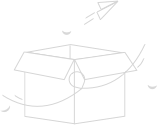-
listening3
普通类 -
- 支持
- 批判
- 提问
- 解释
- 补充
- 删除
-
-
listening3
Psst. Want a space telescope?

America's spies make a generous donation to NASA. AMERICA'S civilian space programme is built atop its military one. Its rockets trace their ancestry, via ballistic missiles designed to carry nuclear warheads into the Soviet Union, to the German V2s that bombarded London and Antwerp during the Second World War. And the Space Shuttle, which made its final flight last year, was used to launch satellites for the air force as well as carrying out its better-publicised scientific missions. So when it was reported on June 4th that the National Reconnaissance Office (NRO), one of the more secretive of America's plethora of spy agencies, had decided to donate two surplus spy-satellite mirrors to NASA, the country's civilian space agency, the news was less bizarre than it might at first have seemed. After all, NASA has benefited from spy technology before. The Hubble space telescope is essentially a redesigned spy satellite that points out into space instead of down at the Earth.
The news that America's spies had two spare satellite mirrors lying around has prompted speculation about their provenance. Both NASA and the NRO are tight-lipped about the specifics. But the new mirror assemblies have a shorter focal length than Hubble's, allowing them to study patches of sky around 100 times larger.
"It looks to me as if these are a couple of Keyhole-11 spares," says Brian Weeden, a space analyst at the Secure World Foundation, a Colorado-based think-tank. Dr Weeden is referring to a code name for American optical spy satellites. He says that the NRO would probably have ordered spare mirrors to replace any that might have been destroyed by failed launches. Although the deal has been in the works for a year, it is not yet clear what NASA plans to do with its new bits of army-surplus kit.
Indeed, an official told a press conference that the agency might not have the cash to make immediate use of both mirrors. But they could nevertheless be a boon to an organisation whose budgets are being squeezed by federal tight-fistedness as well as cost overruns on the James Webb space telescope, an $8.8 billion (and counting) successor to Hubble. One idea is to use one of the mirrors for the WFIRST mission, an infra-red telescope designed to investigate dark energy-the still-mysterious force thought to be behind the accelerating expansion of the universe. Using a higher-resolution NRO mirror would boost the capabilities of WFIRST, says Alan Dressler, a researcher at the Carnegie Institution for Science. It could also cut the project's cost (its present price tag is about $1.6 billion) and shorten its development time. Advocates hope an NRO-powered WFIRST mission could launch in the early 2020s. By then the mirrors would no longer be state-of-the-art, of course. Indeed, they are probably not even the last word in space-borne optics today. That the NRO felt able to give them away suggests that its spies have even better toys to play with, of the sort that astronomers would kill to get their hands on. Could this be the start of a beautiful friendship?
-
-
- 标签:
- 教学
- nasa
- spies
- mirrors
- wfirst
- america'
- nro
- 跨越式
- telescope
- spy
- says
- space
-

.jpg)

学习元评论 (0条)
聪明如你,不妨在这 发表你的看法与心得 ~